
I first became enamoured by ancient wargaming back in the early 2000s. Back in those far off, pre-Warlord days, the focus of many a historical gamer was the now much loved Warhammer Ancient Battles, bolstered as it was, by the magic (and muscle) of the popular Warhammer brand.
Backed by a veritable plethora of supplements, it was the Alexander the Great book by Jeff Jonas (check out his website here) that really sucked me in. As with most gamers, it was the look of the armies that caught my eye as well as the background. I determined that I would embark on building my own phalanxes of battle-hardened Macedonians to carve a path of glory across the known world.
Alas, my nascent project was to remain a pipe dream as the real-world pressures of work and family as well as an impressive lead and plastic mountain at the time conspired to relegate it to the ‘future projects’ list.
Fast forward to the third decade of the twenty-first century, (which to this middle-aged Gen-X kid definitely counts as the future), and that gestating project has finally taken form. The image of all those massed pike phalanxes had lodged itself in my imagination, and not only that, but in the intervening years, Warlord Games had been formed, and along with it saw the release of its own set of superb ancient wargaming rules, Hail Caesar. The last fifteen years has seen the ‘plastic revolution’ transform the wargaming hobby, and with it, those visions of huge battlelines could become reality for a lot more gamers. After dabbling with Imperial Romans for a couple of years, I landed a job in the Warlord Studio, which coincided with a couple of old mates from my Warhammer playing days coming back on the scene. Scott and Lee had been big fans of Warhammer Ancient Battles back in the day and were raring to get their teeth into Hail Caesar.
With the Romans polished off and a couple of opponents ready, the stars had finally aligned to get that Macedonian army started.
But which flavour of Macedonian army? It turned out that ancient history is a deep rabbit hole, and a read-through of the Hail Caesar Army Lists: Biblical to Early Medieval book revealed several Hellenistic flavoured armies ranging from that of Alexander right through to the Antigonid (Late Macedonian) lists. Apart from the Alexandrian army, the one that caught my attention was the army of Pyrrhus of Epirus. I’ll admit the rather shallow reason for this initially was the inclusion of elephants in the list, howdah sporting pachyderms being a splendid sight on the tabletop. But a bit more in-depth reading into Pyrrhus and the period he lived in (I recommend both Osprey’s The Armies of Pyrrhus of Epirus by Nicholas Sekunda and Pyrrhus of Epirus by Jeff Champion – both available through Amazon) and the die was cast on my next army building project.
Why a Pyrrhic Army?
‘What is fated, it is impossible to escape.’
Pyrrhus of Epirus
Although an important figure in his own time, Pyrrhus of Epirus is largely forgotten in our own popular culture, certainly when compared to figures such as Caesar, Hannibal, and Alexander. Arguably, his most lasting contribution to history is the expression ‘pyrrhic victory’, meaning one achieved at too great a cost. What makes Pyrrhus and his army interesting to both the historian and the wargamer is that they were the first among Alexander the Great’s Successors to face the power rising to the west of Greece – the Roman Republic, on the field of battle. From his three set-piece battles against the Romans; Heraclea, Asculum, and Beneventum derives what we perceive to be ‘pyrrhic victories’, as although Pyrrhus was victorious in all three battles, he could not readily replace his losses faced with what seemed to be the limitless manpower available to the Roman Republic. He subsequently fought campaigns in Sicily against Carthage and finally in Greece, where he met an ignominious end, killed in a chaotic attempt to take the city of Argos by a surprise night attack.
The reason for Pyrrhus’ confrontation with Rome was the latter’s dispute with the Greek city of Tarentum in southern Italy (at this point Rome’s control did not extend over the entirety of the Italian peninsula). A cursory look at the Pyrrhic army list gives players plenty of options, but the troops that give the army its ‘Pyrrhic’ identity and make it stand out from the other Successor variants, are the Oscans. Oscan is really an umbrella term for those Italian peoples who spoke a common language (Oscan), and who at various times, both fought with and against Rome. They included tribes such as the Samnites, Apulians, and Campanians, and this mix of western troops with the obligatory pike phalanxes and hetairoi cavalry makes for a unique and eclectic army that also packs some serious punch. When the elephants are added to it, the Pyrrhic army can make for a spectacular (and daunting) sight for enemy generals to face.
Fielding the Army
The Pyrrhic army presents the player with a multitude of different units to build your divisions with. As with all flavours of Successor army, pike phalanxes form the core and are thus a must. In a three or four division game I never leave home without at least four phalanxes. These are divided into two divisions (one veteran with the Drilled rule, one normal) with each phalanx being supported by a unit of Oscan light infantry armed with javelins and a skirmish screen of two units of slingers or javelineers in each division.
The third division is the hetairoi cavalry – the speartip of the army. I usually take at least one division upgraded to heavy cavalry. These units will go through most enemies like a hot knife through butter if wielded correctly. I bolster them with two units of light cavalry fielded as small units and upgraded to be Tarentines. Not only is this in keeping with the historical nature of the army (Tarentum was famed for the quality of its light cavalry), but it gives them the Feigned Flight special rule, enabling them to use their natural speed to draw enemy units out of position before breaking contact with the enemy.
The fourth division is made up of hoplite infantry supported by lighter troops such as thureophoroi. These units represent the Tarentine troops pressed into Pyrrhus’ service as part of the bargain struck with Tarentum for his military support in their war with Rome.
The classic strategy employed by Successor armies is to whittle down enemy numbers with your skirmish line before the pike phalanxes engage the enemy line. Once locked in place they can be flanked by either the superb hetairoi cavalry or the fearsome power of the war elephants. The Tarentine hoplites are normally deployed on the opposite flank to the cavalry to prevent the pike phalanxes being outflanked in turn.
The Pyrrhic player also has access to excellent medium cavalry in the form of the ubiquitous Thessalians, but also Oscan cavalry, if you really want to add that ‘Pyrrhus in Italy’ flavour to the army. Both get the Elite rule, meaning they recover from being disordered on a roll of 4+, a useful ability not to be sniffed at as any veteran player will tell you!
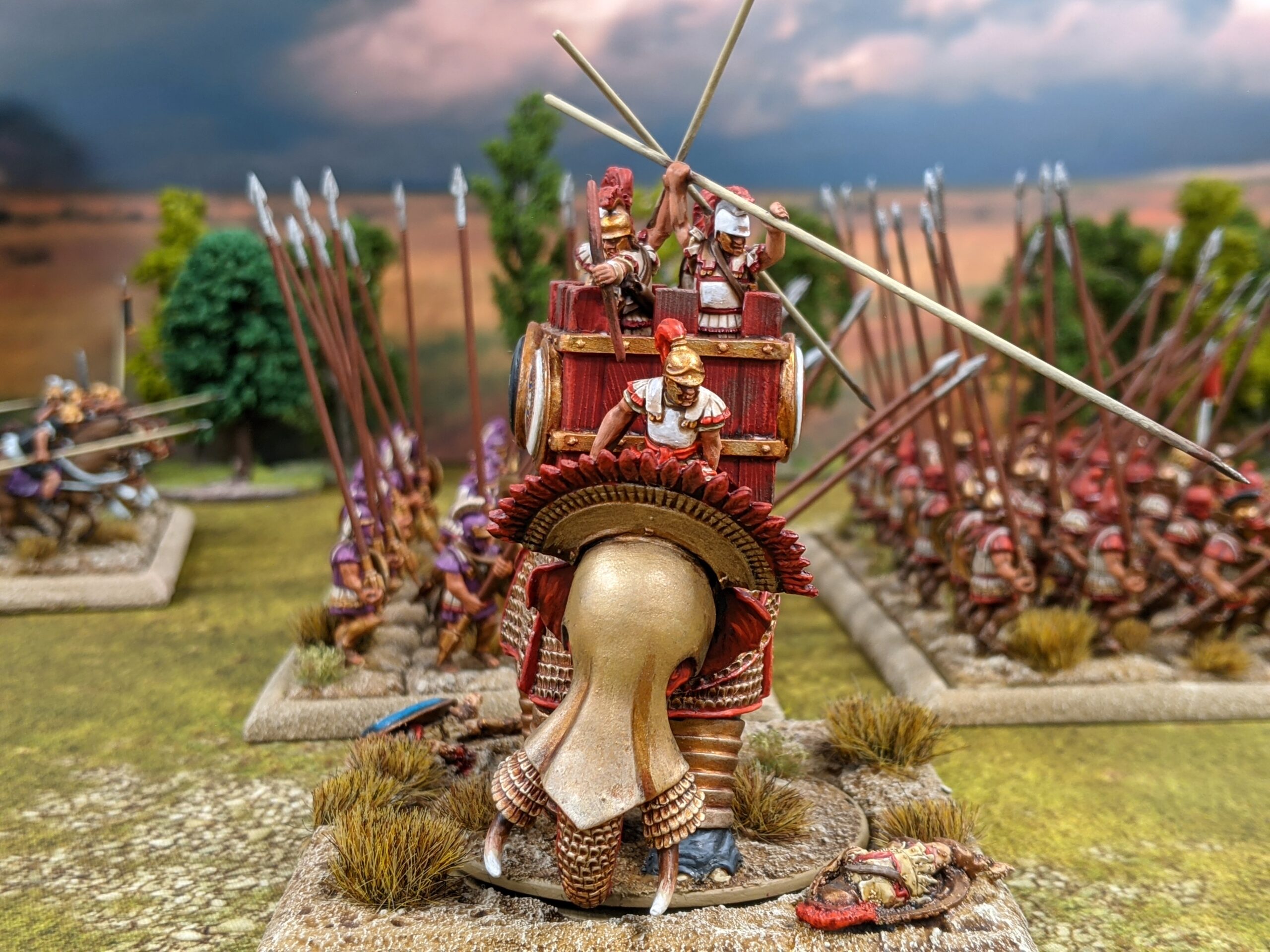
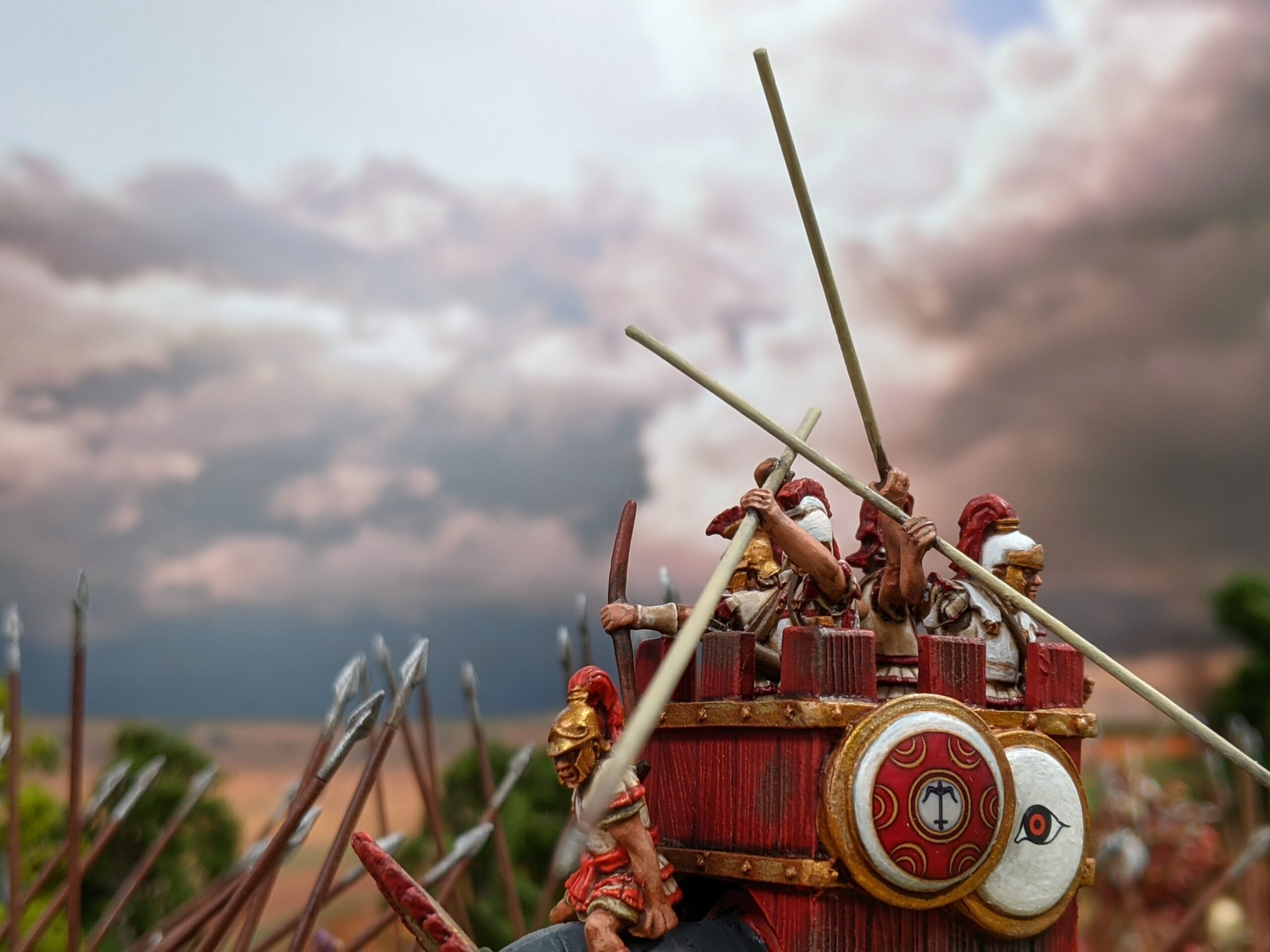

War elephants are another must, if just because they are so characterful of Successor armies, and because they played such an important role in Pyrrhus’ victory at the Battle of Heraclea in routing the Roman line, but were also a contributing factor in the disastrous night attack on Argos which saw Pyrrhus meet his fate. I normally attach them to infantry divisions as support (they can’t support cavalry), and their sight on the tabletop can definitely have a psychological effect on your opponents! Charging elephants are particularly effective against cavalry, but do try to keep them away from open order troops as they are the greatest threat to your pachyderms, receiving +1 to their hit rolls against the beasts. Elephants can be a double-edged sword as they are prone to stampede if forced to give ground, but fortune favours the brave, and anyway, the miniatures look fabulous on the wargames table.
Building and painting the army
The Successors starter army boxed set is a great place to start building a Pyrrhic or indeed any other army based around the Macedonian pike phalanx. This set gives you 100 of the excellent plastic phalangites miniatures supported by a unit of hetairoi cavalry and a war elephant. This will give you the core of the army upon which you can add in more cavalry and supporting units like skirmishers as you progress.
The Army Painter Quickshade is your friend when painting large armies such as those for Hail Caesar. On my phalangites I tend to use a spot colour to denote the regiments. In the case of my veterans, I used purple as this was a very expensive dye to produce in ancient times, so denoted their exalted status in the army. I used red on my second division as this was a cheaper and more ubiquitous dye to produce. Once I’d blocked in all the colours, I attached the shields (which I’d painted separately and applied the excellent Little Big Man Studios decals to – they even make a specific Pyrrhic design), and once the glue was dry, applied a strong tone wash over the whole model. I then apply highlights over the quickshade once dry, to bring out the details of the miniatures. After that I base the models with a mixed grade of modelling sand and seal it with watered down PVA to destroy the surface tension and stop it flaking off when I come to paint it. I’ve painted and drybrushed all the army’s bases in a neutral light brown to represent the scrubland and open plains where ancient battles were most often fought.
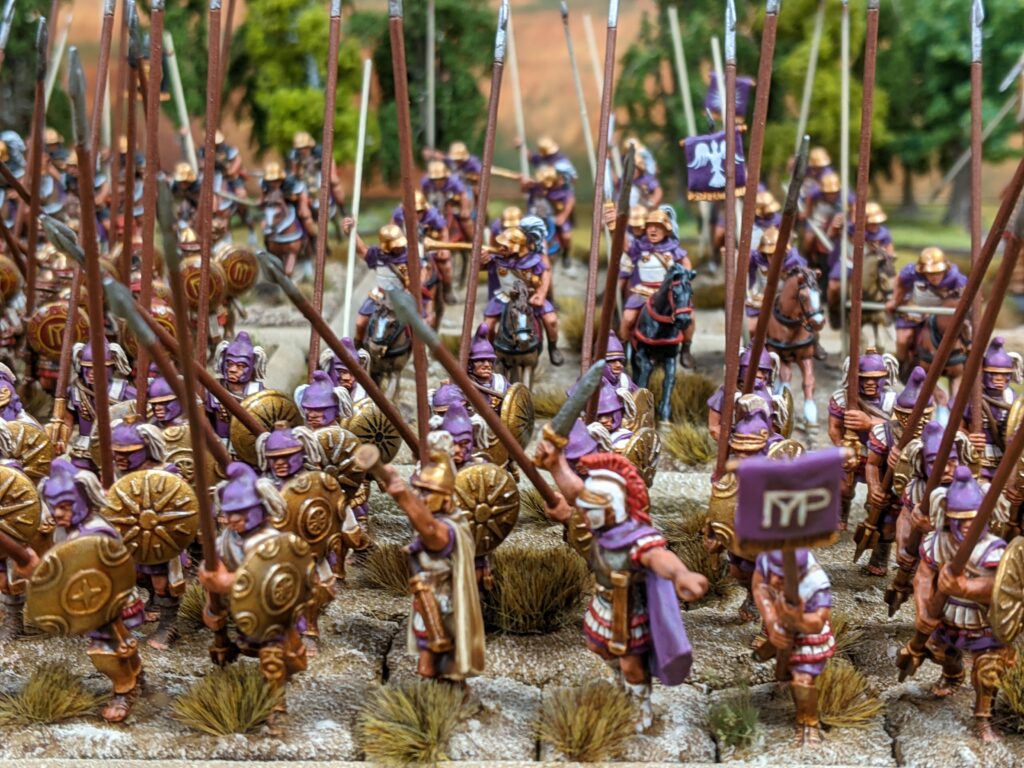
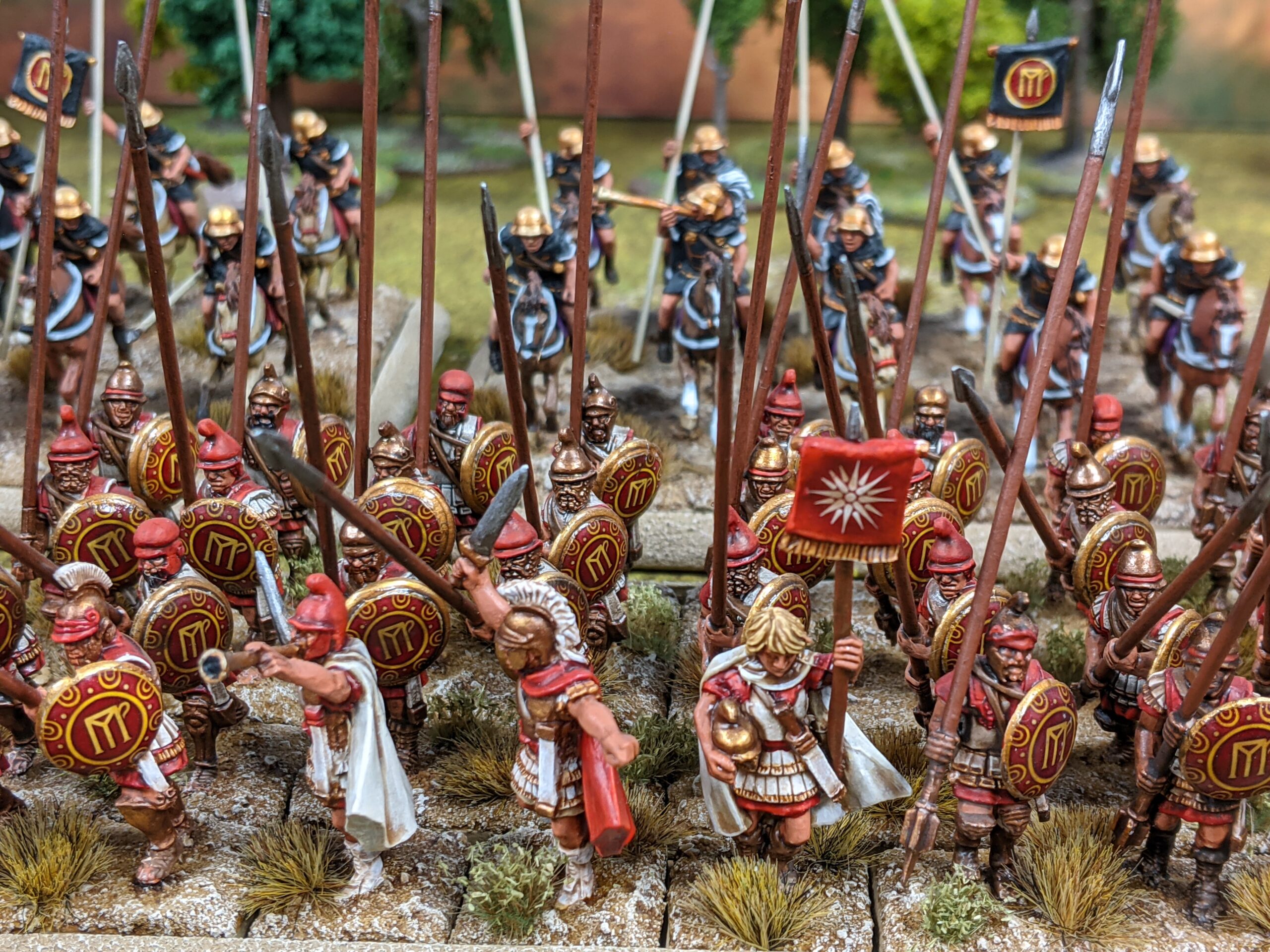
The rest of the infantry models in the army like skirmishers and hoplites were painted using the same method.
I painted the hetairoi cavalry in a more traditional basecoat > shade > highlight method mainly because I prefer the look of horse miniatures painted using this technique rather than with the Quickshade. I always paint the riders separately to the horse, and I find the easiest way to get this type of miniature done is to first drill a hole between the riders’ legs and then superglue in a length of brass rod and stick this in a wine cork (packs of which are cheaply available in most homeware shops). Taking a bit of time to do this at the start definitely makes life easier once you need to get them undercoated and painted. Once the riders and their horses are finished simply snip them off the brass rod and glue them to their respective mount.
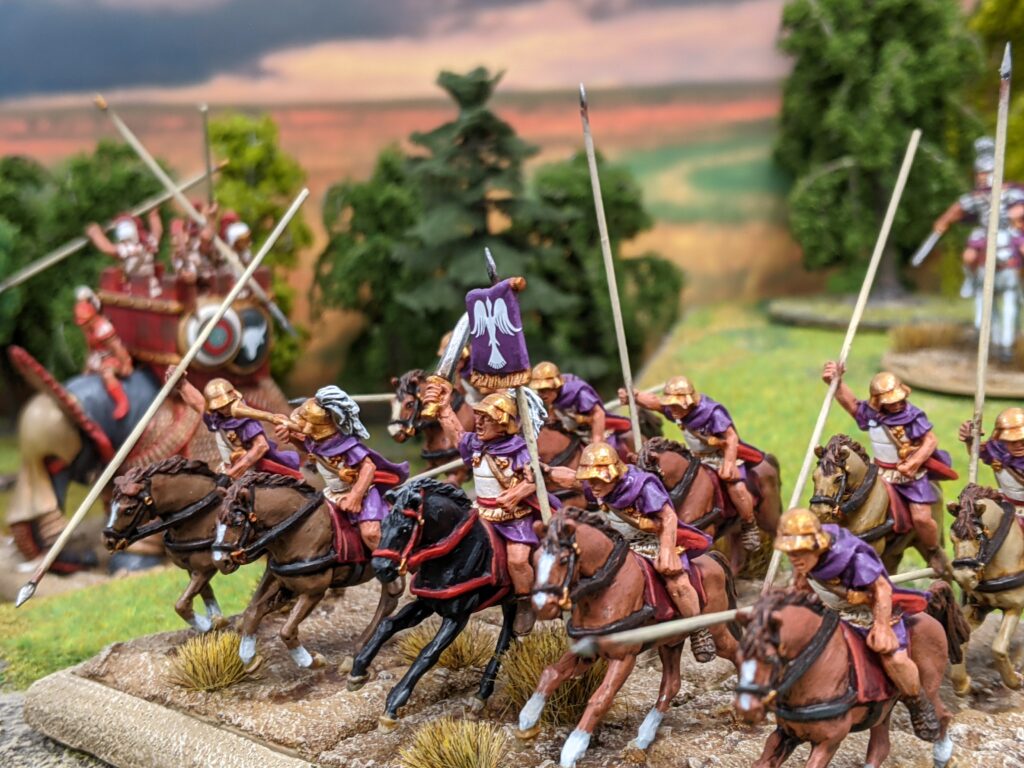
The war elephants were also painted using the same method used for the cavalry.
Future Plans
In Pyrrhus’ later campaigns in Greece he was forced more and more to rely on the eastern celt tribes that had migrated eastwards, a people called Galatians. This gives the Pyrrhic player the opportunity to include celt warbands in the army as medium infantry with the Wild fighters rule (re-roll missed close combat attacks in the first round of the game). I’ll add a couple of these units into the army for colour and also for something different to paint after all the linothorax. I’ve been experimenting with the Warlord plastic celts by giving them head swaps with those leftover heads from my phalangite sprues. This gives them a bit more of a hellenistic look rather than ‘generic’ celts as the Galatians would surely have felt the influence of the Greeks and Macedonians to the south.
After that I’m working on building a Thessalian cavalry division of mostly light cavalry. Thessalian cavalrymen were much in demand as mercenaries across the Hellenistic world and so fit into just about all the other armies that came after Alexander up until the Greek world was subsumed into the Roman sphere.
My long term aim is to eventually expand the army out so that I can field several flavours of the Alexandrian or Successor armies; from that of Philip II and his son Alexander which conquered Persia, to that of the Antigonid successor dynasty that also clashed with Pyrrhus before itself being eventually vanquished by Rome.
On the Tabletop!
For even more insight into the thoughts and construction of this Macedonian Army, hit up the video below:
I hope my ramblings have inspired some of you to try dipping your toe into Hail Caesar and the joys of playing games of miniature soldiers in the ancient world. Although the size of Hail Caesar armies can seem daunting at first, most ancient warriors are relatively easy to paint and with a bit of effort a unit or two can easily be completed within a month. And with the enthusiasm that always accompanies the start of a new army project, those serried ranks of grey plastic will soon be decked out in the colours of Epirus, ready to fight for the glory of King Pyrrhus.
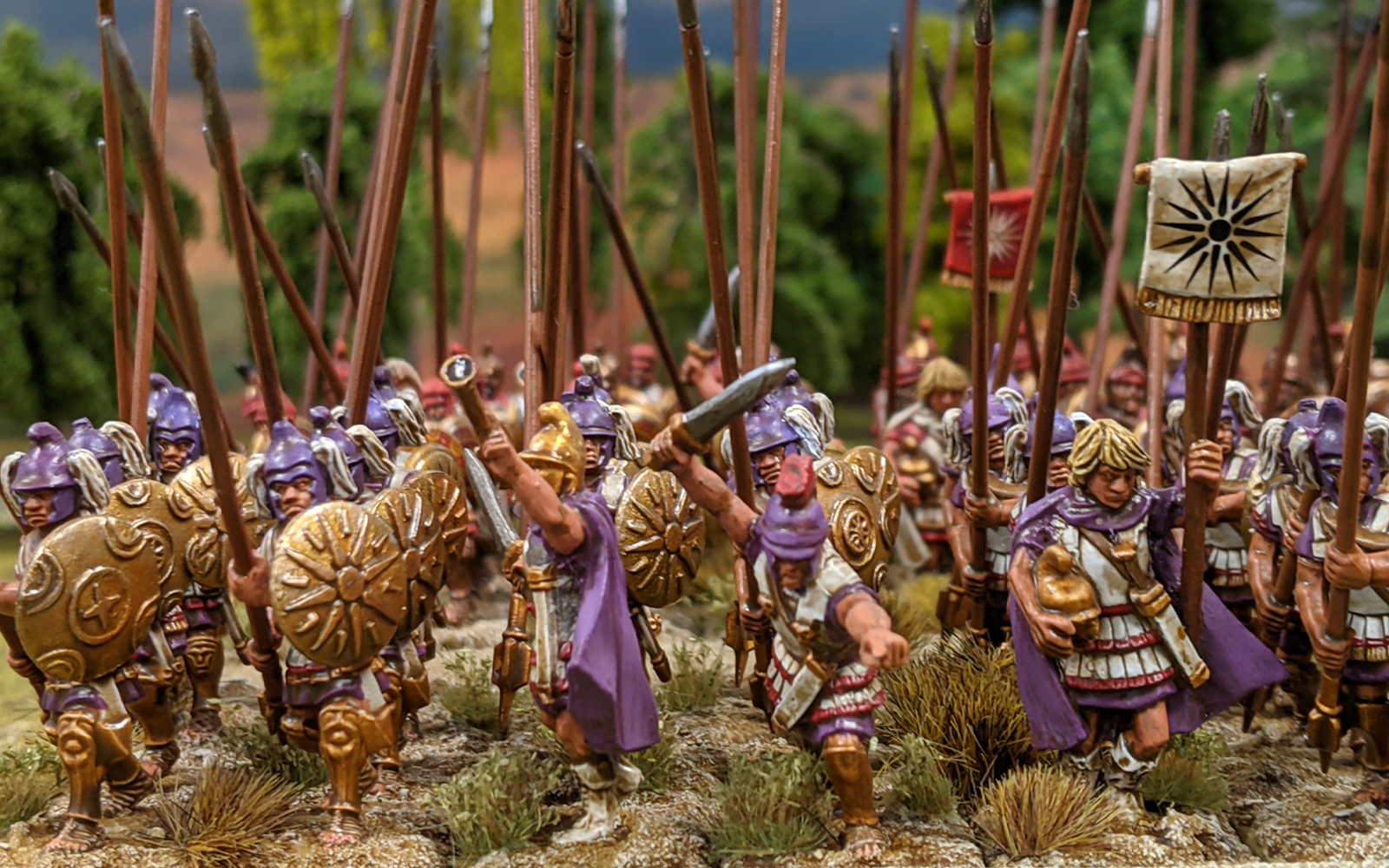
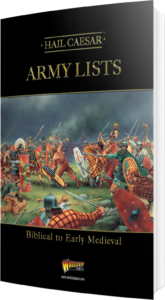
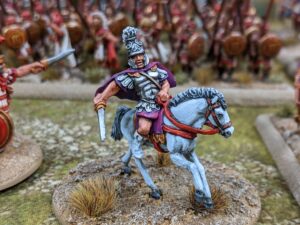
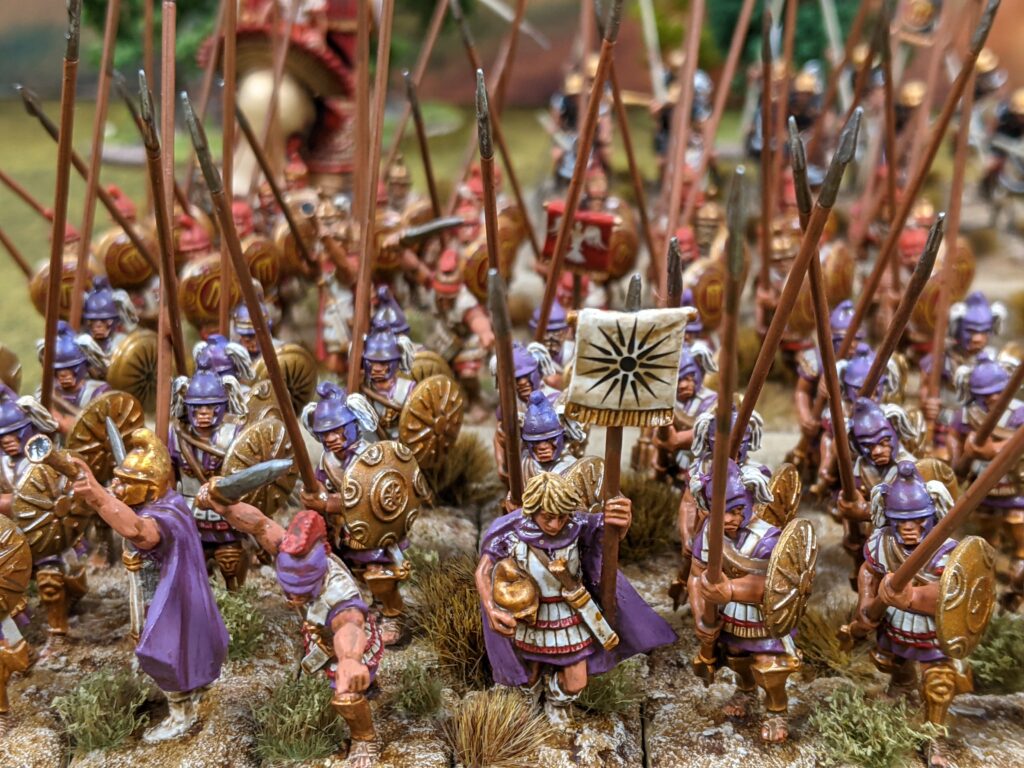
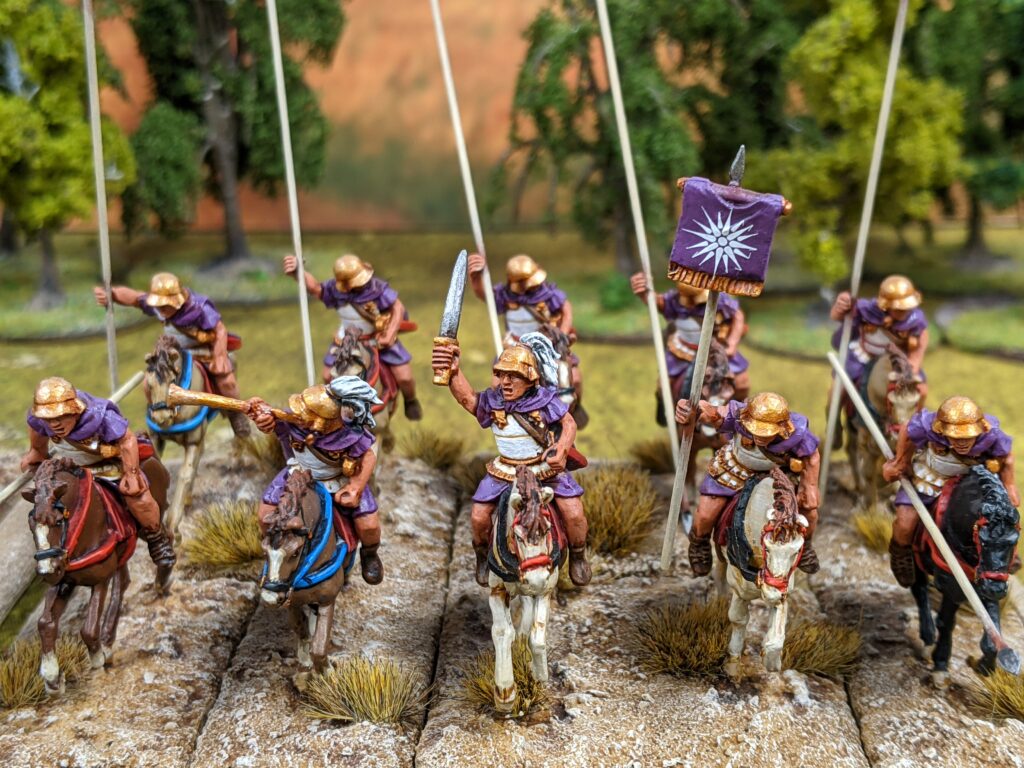
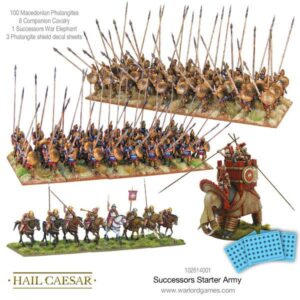
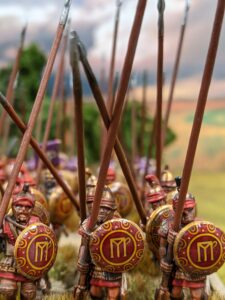
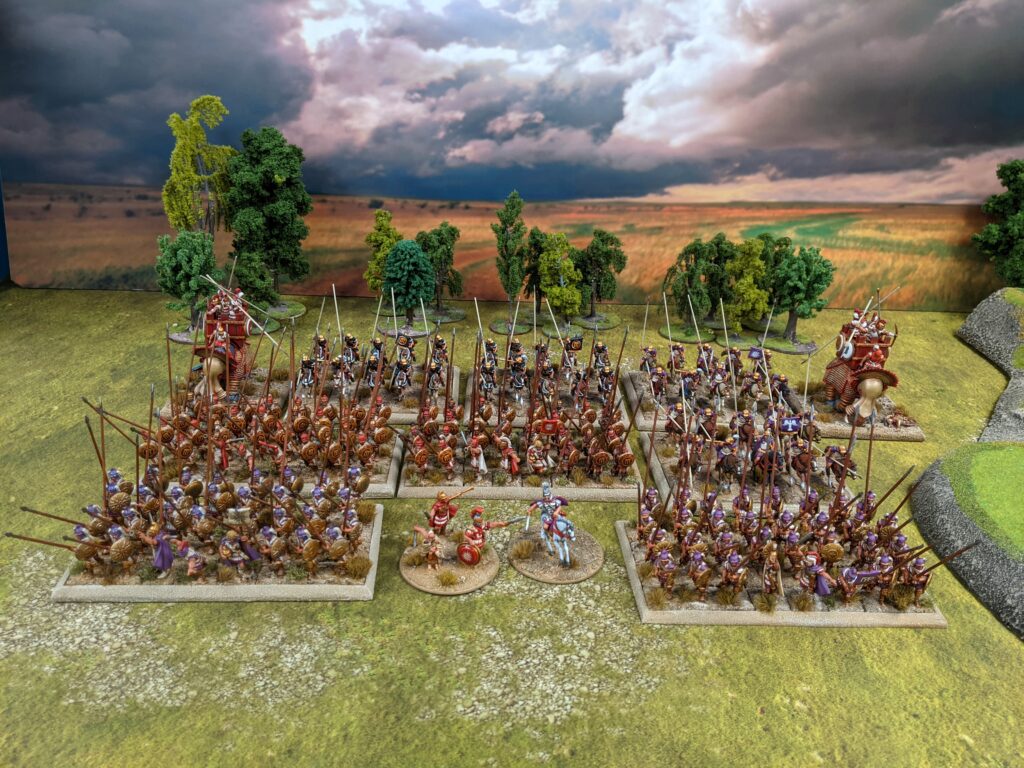
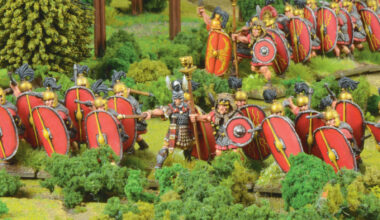

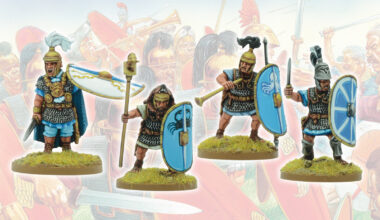
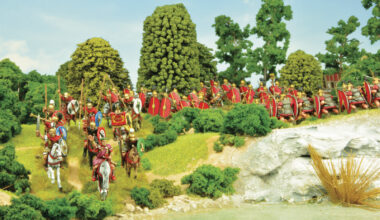
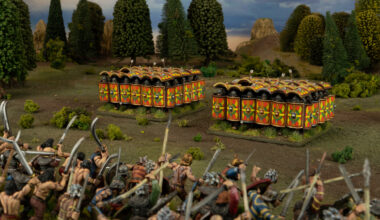
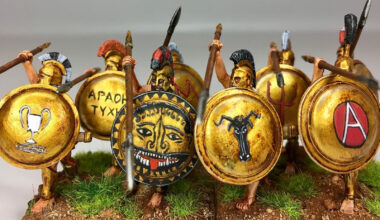
8 comments
Nice highlight on an oft forgotten enemy of Rome. Well done
Your force is super cool. Great job on finishing it.
Where are the Oscans? What do they look like? I am going to guess that they look like Victrix’s Iberian or Samnite ranges. Heck, they could be a bunch of crazy naked dudes.
I hope you add some Oscans to your force.
Hi Ronald,
Rest assured I’m working on an Oscan contingent! Oscan is an umbrella term that refers to those Italian peoples who spoke the Oscan language. These include the Samnites and Lucanians. Just do an internet search for ‘Samnites’ or ‘Oscans’ to get an idea of ho they looked.
I love articles like this one. Thanks for the insights and maybe give us a battle report sometime.
Nice! I’ve started a Pyrrhic warband for SPQR and Clash of Spears, and with the imminent arrival of Hail Caesar 2e, looks like I have an Army project as well. 🙂
Potentially silly newbie Question here,
am I right in guessing all the older HC supplements are still extant since 2nd edition dropped?
Hi Aaron, all existing Hail Caesar supplements remain viable for use with the new edition.
Hello!
Where’d you get the pyrrhus miniature from? Can’t find it anywhere! It’s great!
Comments are closed.